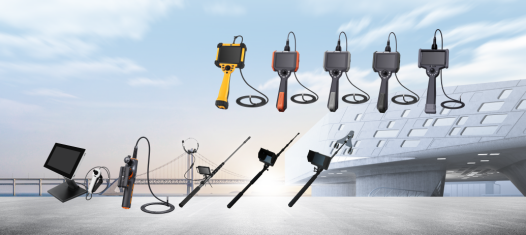What equipment does an industrial endoscope belong to?
2023-05-12
An industrial endoscope is a device used to detect and maintain industrial equipment, typically used to inspect pipelines, containers, machine interiors, or other difficult to observe areas. They use optical principles and camera technology to achieve internal visual inspection, allowing users to have a very intuitive understanding of the device's status and problems.
Industrial endoscopes were originally developed for the military and aviation fields to inspect the internal structures and components of aircraft engines, missiles, and other spacecraft. Nowadays, industrial endoscopes have been widely used in various industries such as manufacturing, chemical, medical, and automotive, facilitating timely detection of equipment operation status and improving production efficiency.
Industrial endoscopes typically consist of a flexible or rigid probe and a display. The flexible probe is composed of a series of flexible connecting rods, which enter the inspected area through a winding path. Rigid probes are more suitable for inspecting small spaces and can be fixed in specific positions for detection. During the detection process, the probe will collect internal images and transmit them to the display for operators to watch and analyze.

Industrial endoscopes come in many different forms and functions, including infrared and ultraviolet probes, as well as probes for detecting specific materials. In addition, some high-end industrial endoscopes also have other functions, such as spectral analysis, thermal imaging, and vibration detection.
When using industrial endoscopes, it is necessary to pay attention to safety and correct usage methods. Operators must strictly follow the operating procedures, wear personal protective equipment, and ensure the normal operation of the equipment to ensure their own and others' safety.
In summary, industrial endoscopes are a very useful tool that can help users achieve accurate and fast internal equipment inspection. Through this type of equipment, users can better understand the status of the equipment, promptly identify problems and take corresponding maintenance measures, improve the stability and reliability of the equipment, thereby improving production efficiency and reducing costs.



